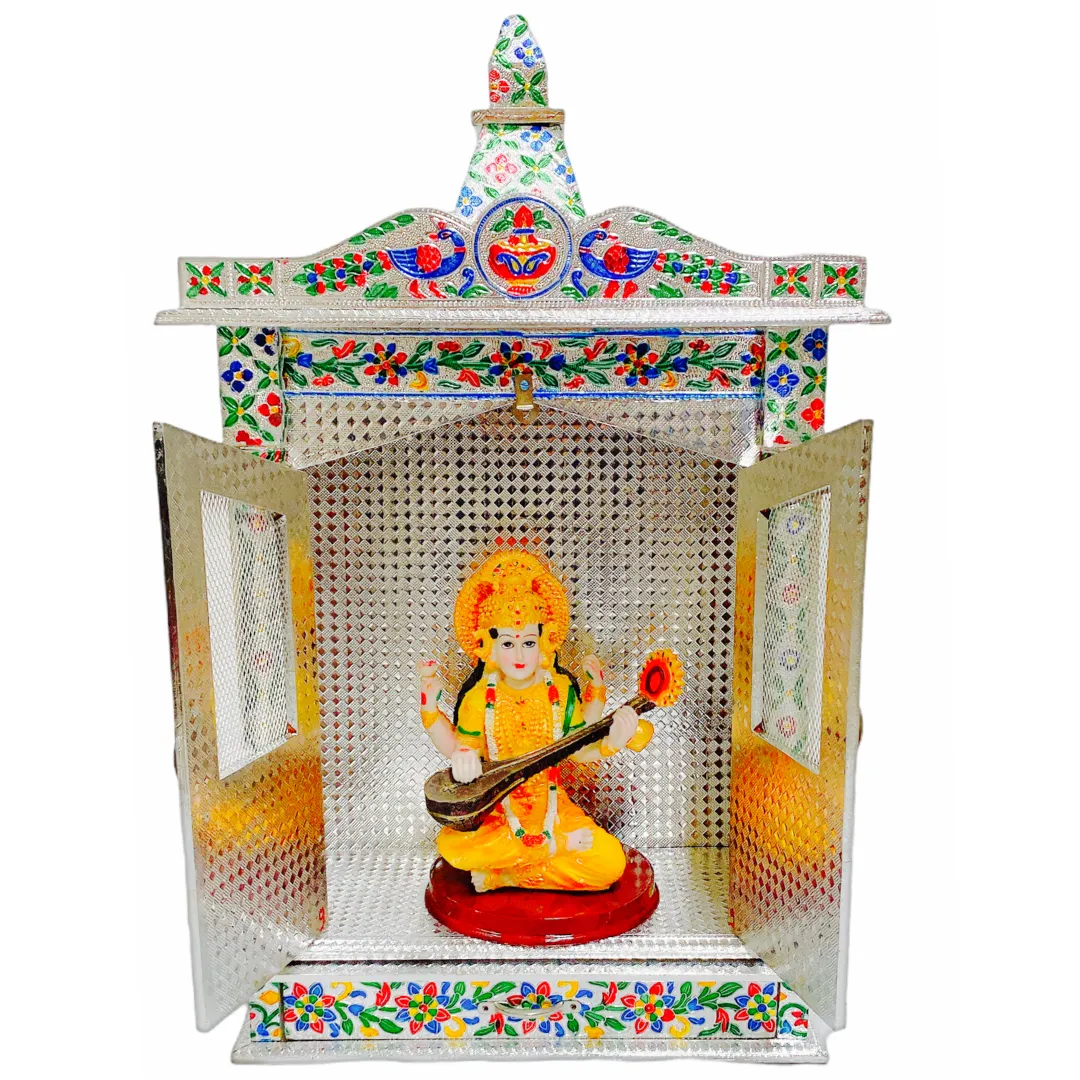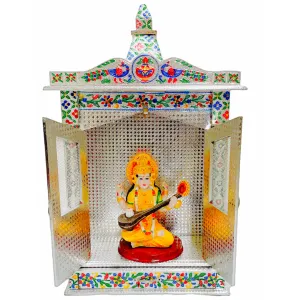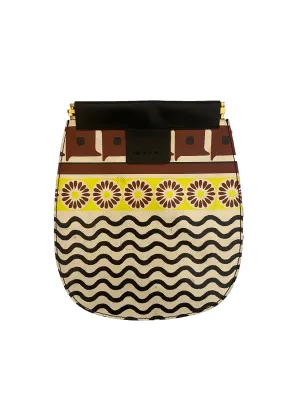A Silver Meenakari Mandir is a religious shrine or temple crafted with intricate artistry and adorned with Meenakari work, a traditional form of enameling that originated in Rajasthan, India. The term "Meenakari" refers to the art of decorating metal surfaces with vibrant colors and intricate patterns. When applied to silver, it creates a stunning visual appeal, combining the brilliance of the metal with the vivid hues of enamel.
The structure of a Silver Meenakari Mandir typically involves a silver base that serves as the foundation for the entire piece. Skilled artisans then meticulously apply the Meenakari work, utilizing a variety of colors to depict religious motifs, floral patterns, and other intricate designs. These designs often hold deep symbolic meanings, reflecting the rich cultural and spiritual heritage of India.
The silver color of the Meenakari Mandir not only enhances its aesthetic beauty but also adds a touch of elegance and purity to the sacred space. Silver is considered auspicious in many Indian traditions and is associated with divine energy. The reflective nature of silver is believed to symbolize purity and the ability to ward off negative energies, making it a popular choice for religious artifacts.
The Meenakari art form has been passed down through generations, with artisans honing their skills to create masterpieces that blend traditional craftsmanship with contemporary design. The Silver Meenakari Mandir, therefore, becomes not only a place of worship but also a work of art that showcases the cultural richness and artistic finesse of the region.
These temples are often cherished family heirlooms, passed down from one generation to the next, symbolizing continuity in religious practices and a connection to the roots of Indian heritage. The Silver Meenakari Mandir stands as a testament to the harmonious blend of spirituality and artistry, encapsulating the essence of India's cultural diversity and its deep reverence for the divine.















